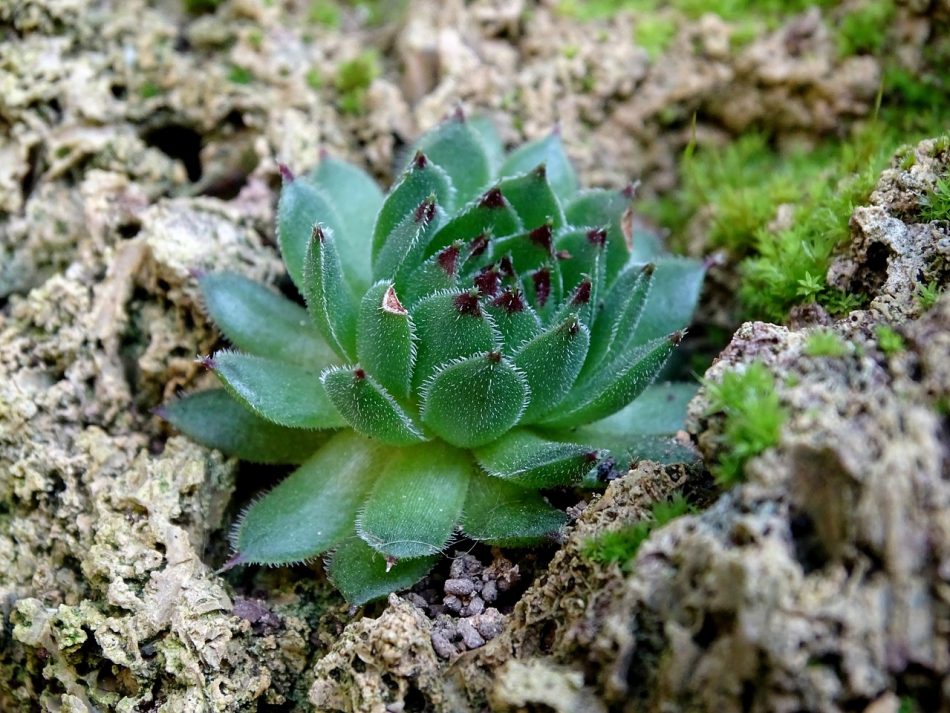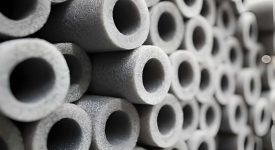Are you tired of spending money on store-bought produce that lacks flavor and freshness? Look no further! In this article, we will share with you the best gardening tips to help you grow your own food at home. By following these tips, you can enjoy the satisfaction of harvesting your own fresh, organic produce all year round.
Gardening is not only a rewarding hobby but also a great way to ensure that you and your family have access to healthy and nutritious food. Whether you have a spacious backyard or a small balcony, you can create a thriving garden that provides you with an abundance of fruits, vegetables, and herbs.
Choosing the Right Location
Choosing the right location for your garden is crucial to ensure the success of your plants. By considering factors such as sunlight, soil quality, and accessibility, you can create an ideal environment for your garden to thrive.
Sunlight is one of the most important factors to consider when selecting a location for your garden. Most vegetables and fruits require at least 6 hours of direct sunlight per day to grow and produce abundant harvests. Observe your yard throughout the day to identify the areas that receive the most sunlight. Avoid planting your garden in shaded areas or close to large trees that may block the sun.
Soil quality is another essential factor to consider. Conduct a soil test to determine the pH level and nutrient content of your soil. This will help you understand if any amendments are needed to optimize the growing conditions for your plants. Additionally, assess the soil’s texture and drainage. Well-draining soil is crucial to prevent waterlogging and ensure that the roots receive adequate oxygen.
Accessibility is also important when choosing a location for your garden. Consider how easily you can access the garden for watering, weeding, and harvesting. It’s best to have the garden located close to a water source to make watering more convenient. Additionally, ensure that the garden is easily accessible for maintenance tasks and for enjoying the fruits of your labor.
Preparing the Soil
Preparing the soil is a crucial step in ensuring successful plant growth and a bountiful harvest. By taking the time to properly prepare your soil, you can create an optimal environment for your plants to thrive. Here are some essential steps to follow:
Before planting, it’s important to test your soil’s fertility. This will help you determine its nutrient content and pH level, which are vital for plant growth. You can easily find soil testing kits at your local garden center or send a sample to a professional laboratory for a more comprehensive analysis. Based on the results, you can then make necessary adjustments to optimize your soil’s fertility.
The texture of your soil plays a significant role in water retention and nutrient absorption. Sandy soil drains quickly but may require more frequent watering, while clay soil retains water but can become compacted. To improve soil texture, you can incorporate organic matter such as compost or well-rotted manure. These materials help to loosen compacted soil, improve drainage, and enhance its overall structure.
Proper soil drainage is essential for preventing waterlogging and ensuring that plant roots receive adequate oxygen. If your soil has poor drainage, you can take several measures to improve it. One option is to create raised beds or mounds, which allow excess water to drain away more easily. Additionally, adding organic matter, such as compost, can help improve soil structure and drainage.
In order to provide your plants with the necessary nutrients, it’s important to amend your soil. This can be done by adding organic matter, such as compost, which enriches the soil with essential nutrients. Additionally, you can use organic fertilizers to supplement any nutrient deficiencies. Be sure to follow the recommended application rates and avoid over-fertilizing, as this can harm your plants.
By following these essential steps, you can prepare your soil for planting and create an ideal environment for your plants to grow and thrive. Remember, healthy soil is the foundation for a successful garden!
Testing Soil pH
One of the most important factors in creating optimal growing conditions for your plants is testing the pH level of your soil. Soil pH refers to the acidity or alkalinity of the soil, and different plants thrive in different pH levels. By understanding and adjusting the pH of your soil, you can ensure that your plants receive the nutrients they need for healthy growth.
To test the pH level of your soil, you can use a soil testing kit or send a sample to a lab for analysis. These tests will provide you with a numerical pH value, which typically ranges from acidic (pH below 7) to alkaline (pH above 7). Most plants prefer a slightly acidic to neutral pH level, around 6 to 7.5.
If your soil pH is too acidic or alkaline for the plants you want to grow, you can make adjustments to bring it into the optimal range. Adding organic matter, such as compost or well-rotted manure, can help raise the pH of acidic soil. On the other hand, incorporating sulfur or peat moss can lower the pH of alkaline soil.
By regularly testing and adjusting the pH level of your soil, you can create an environment that promotes healthy plant growth and maximizes the availability of essential nutrients. Remember to follow the specific recommendations for the plants you are growing, as some may have specific pH preferences. Happy gardening!
Amending Soil with Organic Matter
Amending soil with organic matter is a crucial step in creating a nutrient-rich environment for your plants to thrive. By incorporating organic matter such as compost and manure into your soil, you can enhance its fertility and improve the overall health of your garden.
Compost is a fantastic source of organic matter that can be easily made at home by recycling kitchen scraps and yard waste. It is rich in nutrients and helps improve soil structure, water retention, and drainage. To incorporate compost into your soil, simply spread a layer of compost over the planting area and mix it into the top few inches of soil. This will ensure that the nutrients are evenly distributed and accessible to the plant roots.
Manure is another excellent organic matter that can be used to amend soil. It is a great source of nitrogen, phosphorus, and potassium, which are essential nutrients for plant growth. However, it is important to use well-aged or composted manure to avoid burning your plants with excessive nutrients. Before incorporating manure into your soil, make sure it has been aged for at least six months or composted to eliminate any potential pathogens.
When adding organic matter to your soil, it is important to consider the specific needs of your plants. Some plants prefer a more acidic soil, while others thrive in alkaline conditions. Additionally, certain plants may require specific nutrients or soil amendments. Conducting a soil test can help you determine the pH level and nutrient composition of your soil, allowing you to make informed decisions about which organic matter to use and how much to add.
In summary, amending soil with organic matter is a simple yet effective way to boost the nutrient content of your soil and promote healthy plant growth. By incorporating compost and well-aged or composted manure, you can provide your plants with the essential nutrients they need to thrive. Remember to consider the specific needs of your plants and conduct a soil test to ensure optimal results.
Improving Soil Drainage
When it comes to gardening, proper soil drainage is crucial for the health and growth of your plants. If your soil retains too much water, it can lead to waterlogging, which deprives the plant roots of much-needed oxygen. Fortunately, there are techniques you can implement to improve soil drainage and create a thriving garden.
1. Amending the Soil: One effective method is to incorporate organic matter into the soil. Compost, for example, can help improve drainage by loosening compacted soil and enhancing its ability to retain moisture without becoming waterlogged. Adding well-rotted manure can also improve drainage and provide essential nutrients to your plants.
2. Raised Beds: Another technique is to create raised beds. By elevating the soil, you can ensure better drainage as excess water can easily flow away. Raised beds also allow you to control the composition of the soil, ensuring optimal conditions for your plants.
3. Installing Drainage Systems: In cases where the soil is particularly heavy or compacted, installing drainage systems can be beneficial. This can involve the use of perforated pipes or gravel-filled trenches to redirect excess water away from the plants’ roots.
4. Mulching: Applying a layer of mulch around your plants can help retain moisture while also preventing waterlogging. Mulch acts as a protective barrier, allowing water to penetrate the soil gradually and reducing the risk of excess water accumulation.
By implementing these techniques, you can improve soil drainage and create an environment where your plants can thrive. Remember, healthy roots lead to healthy plants, so ensuring proper drainage is essential for a successful garden.
Choosing the Right Plants
When it comes to choosing the right plants for your garden, there are several factors to consider. One of the most important considerations is your climate. Different plants thrive in different climates, so it’s essential to choose varieties that are well-suited to the temperature, rainfall, and sunlight conditions in your area.
Another factor to keep in mind is the available space in your garden. If you have limited space, you may want to focus on plants that can grow vertically or in containers. On the other hand, if you have a large garden, you have the freedom to plant a wider variety of crops.
Personal preferences also play a role in selecting the right plants. Think about what types of fruits, vegetables, or herbs you enjoy eating and would like to have readily available in your garden. Consider whether you prefer annuals or perennials, or if you want a mix of both.
To make the process of choosing plants easier, you can create a list or table to organize your options. List the plants that are suitable for your climate, noting their specific requirements and growing conditions. This will help you make informed decisions and ensure that you select plants that have the best chance of thriving in your garden.
Providing Adequate Watering
Providing adequate watering is crucial for the healthy growth and development of your plants. Understanding proper watering techniques is essential to ensure that your plants receive the right amount of water at the right time. This section will guide you through the importance of proper watering and provide insights into when and how much water to give to different types of plants.
Watering your plants correctly is essential because both overwatering and underwatering can have detrimental effects on their health. Overwatering can lead to root rot and suffocate the roots, while underwatering can cause dehydration and stunted growth.
When it comes to determining when to water your plants, it’s important to consider the specific needs of each plant. Some plants may require more frequent watering, while others may need less. Factors such as the type of plant, weather conditions, and soil moisture levels should be taken into account.
In general, it’s best to water your plants early in the morning or late in the afternoon when the temperature is cooler. This helps to minimize water loss through evaporation and allows the plants to absorb the water more effectively. Additionally, watering at the base of the plants rather than overhead helps to prevent fungal diseases and ensures that the water reaches the roots.
The amount of water your plants need depends on various factors, including the plant’s size, stage of growth, and environmental conditions. As a general rule, it’s important to water deeply and thoroughly, allowing the water to penetrate the soil and reach the roots. This encourages the plants to develop deep, strong root systems.
To determine if your plants need watering, you can perform a simple soil moisture test. Insert your finger into the soil up to the second knuckle. If the soil feels dry at this depth, it’s time to water. However, if the soil feels damp, it’s best to wait before watering again.
Remember that different plants have different water requirements. For example, vegetables and annual flowers generally require more frequent watering, while established trees and shrubs may need less frequent watering once they have established deep root systems. It’s important to research the specific watering needs of the plants in your garden to ensure their optimal growth and health.
By following proper watering techniques and understanding the specific needs of your plants, you can ensure that they receive the right amount of water to thrive. Providing adequate watering is a key component of successful gardening and will contribute to the overall health and productivity of your garden.
Watering Techniques for Different Plants
When it comes to watering your plants, different types of plants have different needs. Understanding the specific watering techniques for various plants is crucial for their healthy growth and development. Let’s explore some of these techniques:
1. Deep Watering for Trees and Shrubs: Trees and shrubs have deep root systems that require deep watering. This means that you should water them slowly and deeply, allowing the water to penetrate the soil to reach the roots. This encourages the roots to grow deeper, making the plants more resilient to drought conditions.
2. Surface Watering for Shallow-Rooted Vegetables: Shallow-rooted vegetables, such as lettuce and spinach, have roots that are closer to the surface of the soil. These plants benefit from surface watering, where you apply water directly to the soil surface. This helps to keep the top layer of soil moist, promoting healthy growth and preventing the roots from drying out.
3. Drip Irrigation for Flower Beds and Garden Rows: Drip irrigation is an efficient watering technique that delivers water directly to the plants’ root zones. This method minimizes water waste by reducing evaporation and runoff. It is particularly useful for flower beds and garden rows, ensuring that each plant receives the right amount of water.
4. Overhead Watering for Established Lawns: Established lawns can benefit from overhead watering, where water is sprayed over the entire area. This helps to keep the grass green and lush. However, it’s important to water early in the morning to allow the grass blades to dry before nightfall, reducing the risk of fungal diseases.
5. Self-Watering Containers for Potted Plants: Potted plants require a different watering approach. Self-watering containers are a great option as they have a reservoir that holds water, allowing the plants to absorb water as needed. This helps to prevent overwatering or underwatering, ensuring optimal moisture levels for the plants.
6. Mulching to Retain Moisture: Regardless of the watering technique you use, mulching is a beneficial practice. Apply a layer of organic mulch, such as wood chips or straw, around your plants. This helps to retain moisture in the soil, reducing the need for frequent watering and protecting the plants’ roots from extreme temperatures.
By understanding and implementing these watering techniques, you can ensure that each plant in your garden receives the appropriate amount of water, leading to healthy growth and bountiful harvests.
Water Conservation Strategies
When it comes to gardening, water conservation is not only beneficial for the environment, but it also helps you save on your water bills. By implementing water-saving strategies, you can minimize water usage in your garden without compromising the health and growth of your plants. Here are some effective water conservation strategies that you can explore:
- Mulching: Mulching is a great technique that helps retain moisture in the soil, reducing the need for frequent watering. By covering the soil around your plants with a layer of organic mulch, such as wood chips or straw, you can prevent evaporation and keep the soil moist for a longer period.
- Drip Irrigation: Drip irrigation is a precise and efficient method of delivering water directly to the roots of your plants. It involves using a network of tubes or hoses with small holes or emitters that release water slowly and directly onto the soil. This ensures that water is delivered exactly where it’s needed, minimizing wastage.
- Collecting Rainwater: Harvesting rainwater is an excellent way to reduce your reliance on tap water for irrigation. Set up rain barrels or a rainwater harvesting system to collect rainwater from your roof, and use it to water your plants during dry periods. This not only conserves water but also provides a free and natural source of irrigation.
By incorporating these water conservation strategies into your gardening routine, you can significantly reduce water usage while maintaining a thriving and sustainable garden. Not only will you contribute to the preservation of our precious water resources, but you’ll also enjoy the benefits of a beautiful and flourishing garden.
Choosing the Right Location
When it comes to growing your own food, choosing the right location for your garden is crucial. The success of your plants depends on factors such as sunlight, soil quality, and accessibility. So, how do you select the ideal spot?
First, consider the amount of sunlight your garden will receive. Most vegetables and herbs require at least six hours of direct sunlight each day. Observe the area throughout the day to determine if it gets enough sunlight. If there are any shady spots, consider trimming nearby trees or choosing shade-tolerant plants.
Next, assess the soil quality. Good soil is essential for healthy plant growth. Conduct a soil test to determine its pH level and nutrient content. This will help you identify any deficiencies and make necessary amendments. Additionally, check the soil’s texture and drainage. Sandy soil drains quickly, while clay soil retains water. Aim for well-draining soil that retains moisture without becoming waterlogged.
Lastly, think about accessibility. You’ll want your garden to be easily accessible for watering, weeding, and harvesting. Consider proximity to a water source and any obstacles that may hinder your gardening activities.
By carefully selecting the right location for your garden, you’re setting the foundation for a successful and bountiful harvest.
Frequently Asked Questions
- Q: What are some important factors to consider when choosing the location for my garden?
- Q: How can I prepare my soil for planting?
- Q: What should I consider when choosing plants for my garden?
- Q: How do I ensure my plants receive adequate water?
- Q: What are some water conservation strategies I can implement in my garden?
A: When selecting a location for your garden, it’s crucial to consider factors such as sunlight exposure, soil quality, and accessibility. Plants generally require at least six hours of direct sunlight daily, so choose a spot that receives adequate sunlight. Additionally, ensure the soil is well-drained and rich in nutrients to support healthy plant growth. Lastly, make sure the location is easily accessible for watering, maintenance, and harvesting.
A: Preparing the soil is a vital step in successful gardening. Start by testing the pH level of your soil using a testing kit, and adjust it accordingly to create optimal growing conditions for your plants. You can amend the soil with organic matter like compost or manure to enhance its nutrient content. It’s also important to improve soil drainage by incorporating organic matter and using techniques like raised beds or adding sand to prevent waterlogging.
A: When selecting plants for your garden, consider your climate, available space, and personal preferences. Choose plants that are suitable for your local climate and can thrive in the conditions of your garden. Take into account the size of the mature plants and ensure they have enough space to grow. Additionally, select plants that align with your preferences in terms of aesthetics, fragrance, or edibility.
A: Proper watering techniques are crucial for the health and growth of your plants. Water plants deeply and infrequently, allowing the water to reach the roots. The frequency and amount of water needed vary depending on the type of plant, soil type, and weather conditions. Monitor the moisture level of the soil and adjust your watering schedule accordingly. Mulching can also help retain moisture and reduce water evaporation.
A: To minimize water usage in your garden, consider implementing water-saving strategies. Mulching around plants helps retain moisture in the soil and reduces water evaporation. Drip irrigation systems deliver water directly to the plant roots, minimizing waste. Collecting rainwater in barrels or using a rainwater harvesting system is another effective way to conserve water. These strategies not only save water but also promote sustainable gardening practices.








